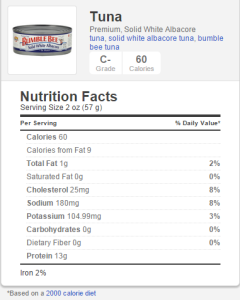Macronutrients, commonly referred to as macros, are the nutrients we eat in large quantities that provide us with energy. There are three types of macronutrients: carbohydrate, protein, and fat.
The first macronutrient is the carbohydrate. Carbs are commonly believed to be the enemy when it comes to weight loss. This is not true! As someone who exercises, carbs are an essential part of your diet. Carbs serve as the main fuel source when our muscles are working hard. If you don’t provide your body with carbs, it will breakdown other chemical compounds (like protein) to use as a fuel source, which can hinder your ability to achieve weight loss or weight gain goals.
There are, of course, some carbs that are better than others. Good carbohydrates mainly fall in the class of vegetables and fruits. Most people don’t even realize these healthy foods are actually carbs. Eating multigrain or whole wheat options when it comes to bread and rice is better than eating white. Similarly, oatmeal or bran cereals are healthier carb choices than colorful cereal brands. Carbs to avoid include pastries and desserts, sodas and artificial syrups, and thick and doughy white breads or grains.
The next macronutrient is protein. Meals or snacks that contain protein are great choices to feel satisfied for longer amounts of time. This ensures that snacking or overeating is kept to a minimum, and intense hunger won’t strike as often between meals.
Eating all your protein in one meal is not as effective to your diet as getting your protein in smaller portions throughout the day. Since eating high protein snacks in small portions throughout the day is ideal, try a handful or two of trail mix in a Greek yogurt and later on have hummus with vegetables. Don’t just limit your protein intake to dinner like most people do. Eating two hamburgers for dinner and calling that your total protein for the day is not going to help your body get to your set goals. In fact, doing that may hinder you from reaching your goals because you then force your body to process excess protein. Eating too much protein at once can cause your body to have a higher nitrogen balance and work harder to expel the waste.
Aside from lean meats, like chicken or ground beef, foods that are healthy and good sources of protein include eggs, Greek yogurts, legumes (such as beans and peas), hummus, and a variety of fish (salmon, trout), so try to mix things up!
The last macronutrient is fat. Don’t be scared by this! Fat should also be an essential part of your diet. There are such things as “good” and “bad” fats. Fats you want to avoid are usually solid at room temperature, like butter. These are the fats associated with poor cholesterol levels and higher risk of heart disease.
“Good” fats are in foods like avocados, seeds (like flax), almonds, pecans, yogurt, and fish like salmon. These fats help keep your cholesterol levels healthy! The best part about “good” fats is that if you are conscientious of the protein and carbohydrates you consume as mentioned above, these fats are, for the most part, already included in your diet and you don’t need to add them. Eating eggs, fish, legumes, nuts, vegetables, fruits, and the other sources mentioned above all contain the “good” fats you need.
A fourth, but no less important, component to any healthy diet is water. Water is crucial to all of our body’s functions and most people don’t even drink it! Water helps us stay alert, energized, and helps every other body process stay normal. When it comes to diet, most of the time when we feel hungry, we are actually just thirsty. Try to have at least 8 glasses per day, or more, depending on how much you are sweating during your workouts, how active you are, your size, and other health considerations.
Try cutting back as much as possible on drinking carbonated sodas, as they contain empty calories, lots of sugar, and have no nutritional value. Even juices that you think are healthy, like orange juice, should only be had in light moderation, since they contain lots of sugar and empty calories. To see more reasons on why you should drink more water, refer to this article here.
Now that you have more knowledge on what essential nutrients your diet should consist of, try to incorporate a variety of the good foods mentioned above into your daily meals. Eat responsibly and see how smoothly your body will function when it’s getting what it really needs.




